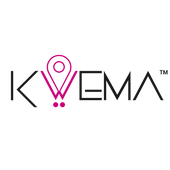Return on Investment also known as ROI is a financial measure that all organizations look up to as it essentially shows how much money you get back for the amount invested. However, healthcare may have more variants to it as ROI can be reflected in both tangible and intangible benefits. Tangibles such as the purchase of assets and equipment and intangibles such as reputation and organizational culture (which at first don't seem to have a direct connection to finance but can decrease the number of incidents and turnover rates while increasing productivity and this translates to savings and more profit).
So with the aim of boosting the idea of ROI being far more than just numbers, we bring you 3 non-financial implementations that focus on security and wellness that will help you increase your ROI.

Innovate, Profit Margin, key decisions
Improve Patient Experience
Patient loyalty increases ROI. When patients, family and visitors have a great experience at your hospital, they are more likely to feel satisfied and be loyal and recommend your services to friends and family or with an online review.
Patient experience can be improved when truly being emphatic with their situation and when mapping their journey before, during and after accessing your services. Knowing their aches can give insight to their behavior and needs. From online service, appointment reminders, comfortable installations to top-notch tech, multiple things can be done to improve patient satisfaction in a wide range of budgets!
Innovate, Profit Margin, key decisions
Safe employees are happy employees! Promote Wellness Initiatives
It's easier to understand how patient experience can reflect on the ROI but little is said about one of your greatest assets: your workers. Nurses, physicians and all healthcare staff play a huge role in ROI.
When you see employee wellness as a full cycle, it's easier to plan and implement initiatives that make workers feel better on and off site which then can make them more productive and increase job satisfaction as well as lower turnover rates. Some crucial actions you can take include mental health support, employee activity days, rewards programs for participation, security systems, etc.
Plus, employees have an impact on patient experience and satisfaction!
TIP. In order to know which activities may be more beneficial it's important to know your facility's risks and the hazards to which employees are exposed at work. For example, if workers experience high rates of stress, giving them access to a therapist can help.

Innovate, Profit Margin, key decisions
You can't think about improving security if you don't know the root of the problem. Address all stakeholders!
Patients, nurses, doctors, security guards, staff and other departments such as IT, finance, investors, etc. should be involved in the development of security plans. All points of view combined will give valuable information about the motivations, reasons and main objectives of developing such a plan.
What do they worry about? What do they care about? Do they like their work? Do they feel safe? Which hazards do they feel vulnerable to? This information can then be crossed with budget, resources and capacity so that an effective security plan can be developed.
At the end, ROI is the sum of all the team efforts that with work make it possible for it to be reflected in numbers. It's challenging, we know. But it's not impossible and identifying risks, people and processes can make it easier to find solutions. That's our mission, to help you find solutions to your security problems, we want to be your allies when making safer work environments that can then be reflected in your ROI!
